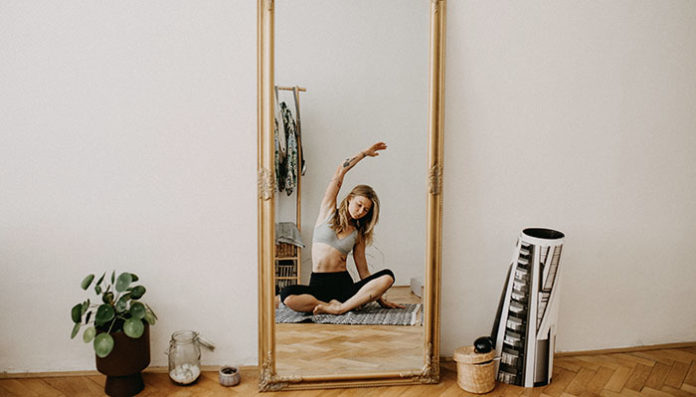
Stretching doesn’t get the respect it deserves. Most exercisers absent-mindedly engage in just a few minutes of it before or after a workout, which certainly feels good but isn’t enough to promote flexibility or any of stretching’s other benefits. According to experts, stretching should be approached not only as a preview or addendum to other physical activity, but also as an essential stand-alone workout.
And it’s especially important now. After months of quarantine inertia, stretching can be a low-impact, nonthreatening gateway to a more active lifestyle, either for those who have fallen out of a fitness routine or who are interested in starting one. For people working from home, it can relieve the discomfort of working from a kitchen table and chair in a makeshift home office. And for essential workers on the front lines of the pandemic, stretching can save tired backs and reduce discomfort and stress.
Stand-alone stretching
The benefits of stretching are widely accepted, and they include increased flexibility and range of motion, improved posture and for many, reduced back pain. A flexible body is more resistant to injury — whether from lifting weights or lifting a bag of groceries from the car trunk. But the kind of stretching most of us do isn’t going to get us there.
“A lot of people misunderstand why they stretch,” says Brad Walker, an athlete, coach and stretching expert. Stretching as a warm-up prepares your muscles to be worked out, and stretching as part of a cool-down helps them return to their pre-exercise state. Neither, according to Walker, has anything to do with increased flexibility. For that, he says, you need to set aside time and work specifically on flexibility — and that means integrating dedicated stretching sessions into your weekly routine.
“Everyone has limited time for exercise,” says Walker, who finds that his new clients are often reluctant to set aside an hour or more of their week “just” to do stretching. Psychologically, he says, people feel they’re getting more bang for their buck if they work out hard and sweat a lot. But depending on the type and intensity, “you can fatigue yourself during a stretching session just as you would a gym workout, bike ride or run.”
“It’s called a flexibility workout because it’s a workout,” says Natasha Nikolaeva, who, with her sister, created StretchIt, which offers subscribers online stretching regimens. By swapping a regular workout with a stretching workout one or more days a week, users are still actively engaging their muscles and building strength, flexibility and range of motion. “They’re not ‘losing’ anything by missing a workout; they’re actually gaining,” says Nikolaeva, who asserts that, at 39, she’s healthier and more flexible now than she was at 25. “Besides, I sweat when I stretch!”
Walker and Nikolaeva both say that stretching can yield significant pain relief, especially for age-related discomfort that so many people think they just have to live with. A body that’s strong and flexible is simply more comfortable, says Nikolaeva, who uses the analogy of a commercial airplane. “If I’m sitting in coach, I’m getting there but I’m not comfortable. But if I move to business class, I feel a lot better. It’s the same airplane going to the same place,” she says, “but I’m not in pain anymore.”
Stretching from home
When the pandemic hit, legions of office workers switched to work-from-home setups, and for many, that meant a lot less moving around. Karen Litzy, a physical therapist in private practice in New York City, says remote work has robbed us of much of our seemingly insignificant daily movement. Walking to the subway or bus stop, taking the stairs, walking to the conference room, leaving the office to go to lunch — it all seems so 2019.
“With Zoom meetings and phone calls, often back to back, we lose the ability to just stand up and walk around,” Litzy says. “People are staying in one position for way too long.” Couple this with less-than-ideal workspaces — those kitchen tables as makeshift desks, for example — and it’s a recipe for stiffness and back pain.
Pressure on a joint, lack of blood flow, stiffness — these are all signals from our body that it’s time to move. Litzy, who has been conducting telehealth sessions from home since March, says she has learned a lot by watching her cat. “Even in his sleep,” she says, “he moves every 20 to 30 minutes.” She says we should take a cue from pets and toddlers. “They never stay still for very long.”
There are a few tricks to making sure you move and stretch enough while working from home, including getting up and walking around, or even lying on the floor while on a phone call.
Walker suggests setting up a couple of different work areas and moving from space to space throughout the day. Whether it’s standing at the kitchen counter, 30 minutes on the couch or sitting at the dining room table, “just move the laptop somewhere else,” he says, “before hours have gone by and you don’t even realize it.”
Litzy suggests a stretch you can sneak in during a Zoom meeting: Drop one leg off the side of your chair and extend it behind you with your knee bent and the top of your foot face down on the floor. The farther back you slide your foot, the more stretch you’ll get in your hip and thigh. Shift to the other side of the chair and stretch the other leg. “To your Zoom colleagues,” she says, “it’ll just look like you’re repositioning yourself in the chair” — or getting antsy for the meeting to end.
You can also try extending one leg in front of you with your heel on the ground. Lean forward from the hip with your back straight and stretch your leg and hip. “You don’t have to bend over,” Litzy says, “and it looks like you’re leaning into the conversation even more.”
Nikolaeva sees a silver lining in the WFH cloud. “It’s positive in that we can actually stretch more,” she says. She suggests using time that might be spent at the proverbial water cooler to do some stretching instead.
“I might be embarrassed to roll out a mat in the middle of the office,” she says, “but at home, I can do a quick 15-minute stretching session and use this time to get the most out of a sad situation.”
Essential worker stretches
Not everyone is working from home, nor are they all sitting the entire day. Essential employees, from medical personnel to sanitation and postal workers, are used to being on their feet all day; the pandemic hasn’t slowed things down for them. Sore backs, knees, shoulders and feet are part and parcel of many of these jobs. Yet even when more movement feels unappealing, sneaking in a few minutes of stretching during the day can make a big difference. “If 10 minutes is all you’ve got,” Nikolaeva says, “at least that’s something. And if you can do 10 minutes three times a day, even better.”
If you’re on your feet most of the day but can grab a few minutes sitting down, Litzy suggests a seated forward flexion stretch — one that’s easy to incorporate into a workday. “You start seated in a chair with your feet and knees wide,” she says. “Then bring your chin to your chest and slowly roll down, reaching your hand to the ground.” Then roll back up one vertebra at a time, with your hands resting on your thighs.
If you can’t stretch until you get home, Walker says to wait until bedtime and stretch 15 to 20 minutes before lights out. (He offers free stretching tips on his website, stretchcoach.com, and the American Physical Therapy Association, for which Litzy is a spokesperson, offers a free 30-minute home stretching program at choosept.com.)
Regardless of your line of work or your work site, experts agree that stretching can help alleviate some of the stress of these extraordinary times because of its effect on our posture and breath. “One benefit of stretching is that it improves posture,” Walker says. “And that opens up the chest, improves breathing and increases oxygen in the blood.”
People tend to hold their breath when they’re under stress, he adds, and stretching also helps us remember to breathe more deeply and regularly. And doing so, Litzy says, activates the parasympathetic nervous system, which reduces anxiety and stress. “That’s all the good stuff that helps calm us down.”
So, try to squeeze in those five minutes of stretching, whether they’re between Zoom calls, online classes or the next delivery. Your mind and your body will thank you for it.
Heath is an author, editor and travel writer based in central Italy. Her website is elizabethfheath.com.
Source: washingtonpost.com











